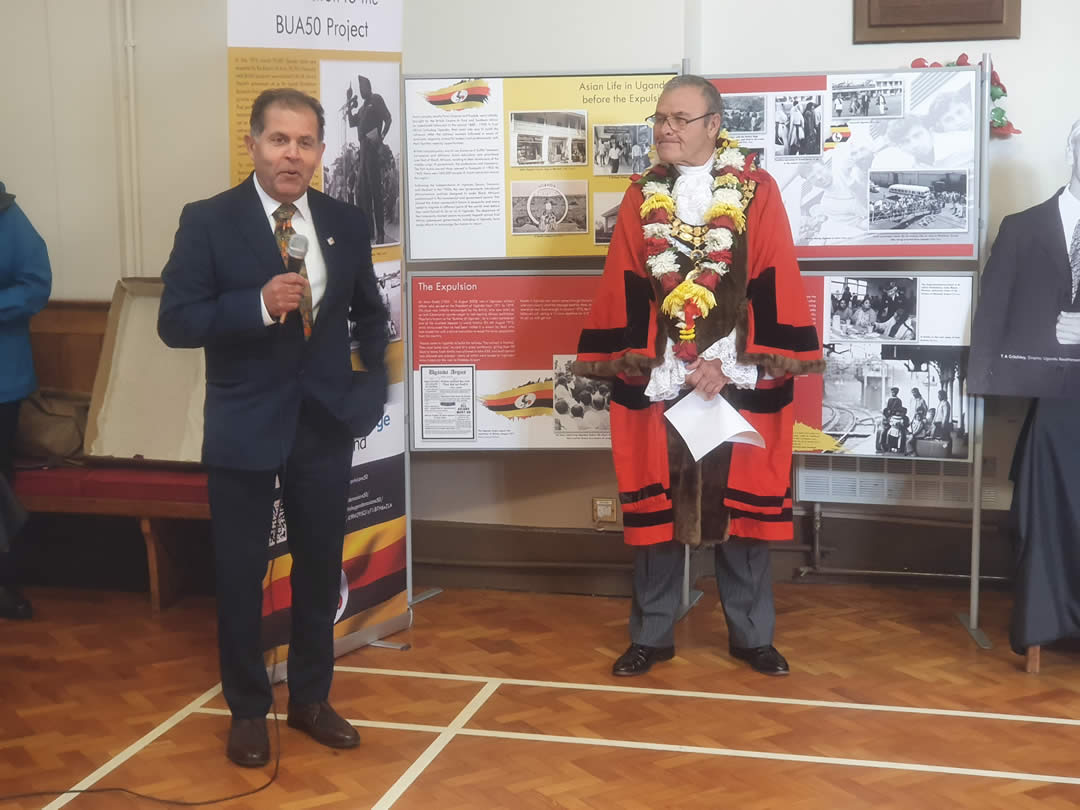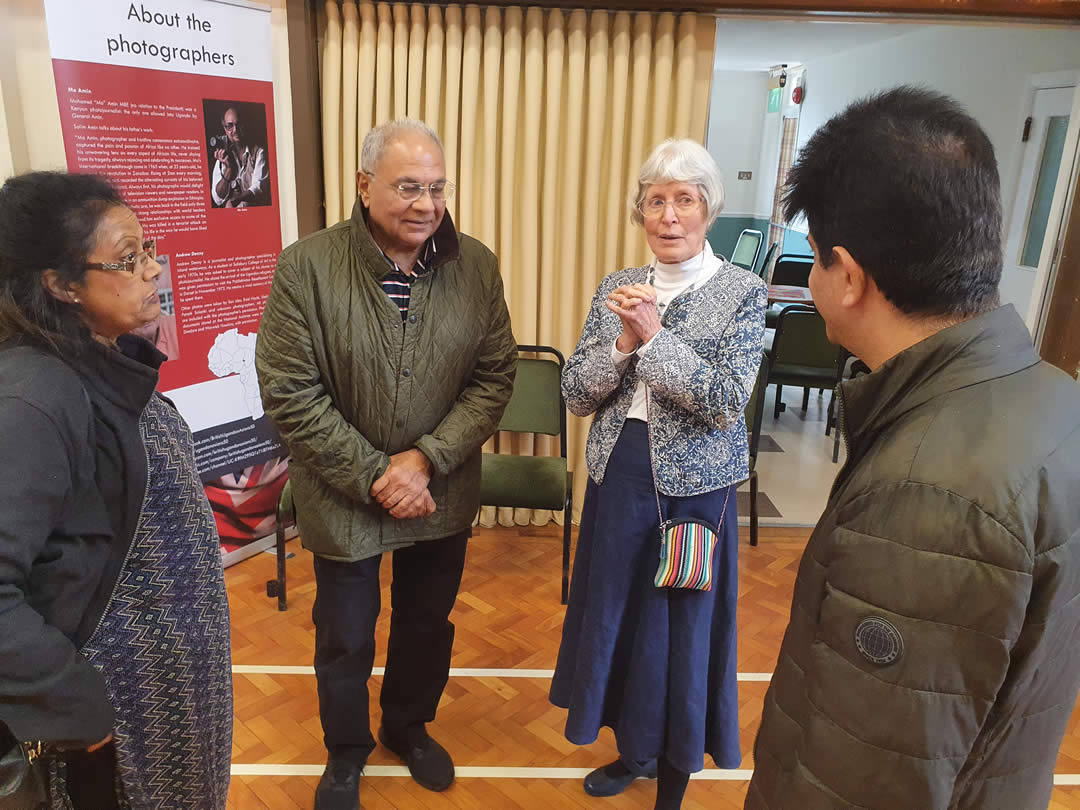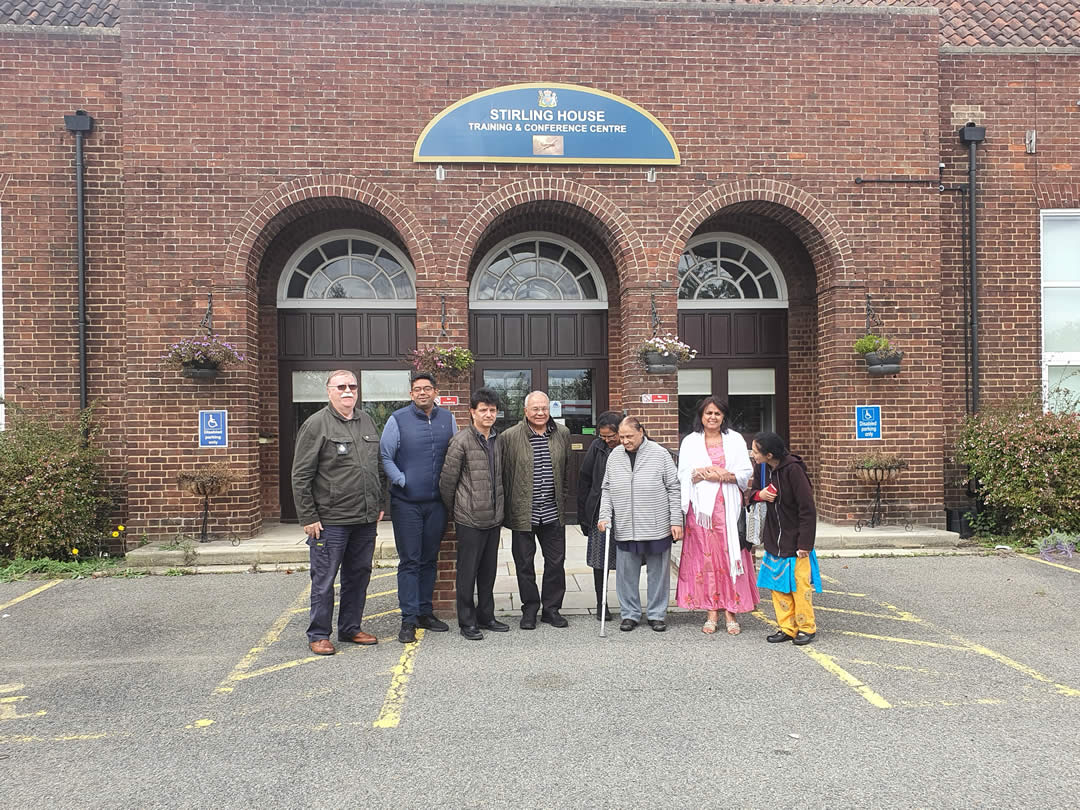The British Ugandan Asian at 50 (BUA50) exhibition took place at the Wickhambrook Memorial Hall on September 24 -25th.
The British Ugandan Asians at 50 Project was proposed by Mr Praful R.C. Patel – Chair of the India Overseas Trust. Its purpose was to capture the recollections of British nationals who volunteered to assist with the reception of the Ugandan Asians expelled by President Idi Amin. And of course the Ugandan Asians themselves that arrived in Britain, their experiences in the resettlement camps and their dispersal around the country, from September 1972 to early 1973.
The Lord Lieutenant was to open the exhibition, however, as the King’s representative in Suffolk she was unable to carry out any duties during the period of official mourning which lasted until the 26th September.
The Mayor of Haverhill, Bruce Davidson, graciously stepped in at very short notice and along with Professor Akbar Vohra, who as a young boy was resident at the Stradishall Resettlement Camp, opened the exhibition. Alan Critchley, Chair of the BUA50, gave a vote of thanks to those involved in the travelling exhibition and The Wickhambrook Local History Society, in particular to Ruth Seal, for producing their local exhibition of the story of Stradishall Resettlement Camp.
The touring exhibition to include local resettlement area material will travel round the country, starting at Neasden London, then here at Wickhambrook, then on to Peterborough, Leicester, Luton, Wales, Devon, Coventry and back to London in Wembley.
The project has been funded by the National Lottery Heritage Fund, plus generous donations from individuals within the British Ugandan Asian Community.
An open access archive of key documents, photographs and other materials has been set up as a resource for future generations. A web site bua50.org has been set up to access this with a number of interviews available on You Tube.
Stradishall Resettlement Camp
Fifty years ago from September to November 1972, President Idi Amin, expelled all the Asians living in Uganda. More than twenty-eight thousand, mostly British Citizens come to Britain. They were allowed to bring just £50 per family and one suitcase, or items they could carry on board.
Often, Idi Amin’s soldiers would take everything off them and they arrived in just the clothes they were wearing.
Many of the flights came into Stansted Airport, with two or three landing every 24 hours.
Stradishall Camp, about 8 miles from Haverhill, a decommissioned RAF base which had been empty for about two years was hastily recommissioned to take in the Ugandan Asians.
Group Captain Frederick Rothwell was appointed Camp Administrator. It could hold a maximum of 2,000 people, using the barracks, former officer’s and other ranks’ houses. These had to be reconnected to water, electricity and sewage and prepared for the refugees.
The Army loaned six men to help with the sorting and heavy work. The WRVS had the responsibility of preparing the accommodation. Hadleigh Youth Club joined the WRVS preparing the Medical Centre. The work of making the accommodation ready fell mainly to the Volunteers. A Catering Head and staff were appointed to prepare food for up to 2,000 people, three times a day.
The camp was in use for six months, a total of 3,294 refugees were housed, with 3,044 resettled with houses and jobs, the average length of stay was 8 weeks. The final 250 refugees were transferred to Gaydon transit camp, prior to their resettlement.
The Resettlement Board, headed by T. A. Critchley, worked tirelessly travelling the country looking for housing and jobs for the refugees. Haverhill allocated ten houses, furnished by the Round Table and Bury St. Edmund, three. This was very generous, as there was a great demand from local families waiting to be housed. It was decided that these people from Uganda had nothing and needed special help.
A Playgroup was started for the youngest children in the Camp, but it soon became necessary for the Education Authority to appoint four teachers and a Headmaster, Mr Roger Gillingham, to run a school.
Medical staff were in great demand, especially as any disabled or ill Asians coming into the country were sent directly to Stradishall. Local doctors carried much of the load.
The WRVS under Jill Simpson organised the many volunteers. The WI sorted clothing, much needed by the refugees, who arrived often in saris and sandals. As one person stated –
“One of the most impressive things at the Camp is the flood of help that has come in from all over Suffolk. Cartons of donated fruit and piles of donated clothes, blankets and toys line the corridors.”
Robert Cash
Wickhambrook Local History Society


